Law and Order: Special Artifacts Unit Winnipeg Police Museum shines a light on the history of policing in city
Read this article for free:
or
Already have an account? Log in here »
To continue reading, please subscribe:
Monthly Digital Subscription
$1 per week for 24 weeks*
- Enjoy unlimited reading on winnipegfreepress.com
- Read the E-Edition, our digital replica newspaper
- Access News Break, our award-winning app
- Play interactive puzzles
*Billed as $4.00 plus GST every four weeks. After 24 weeks, price increases to the regular rate of $19.00 plus GST every four weeks. Offer available to new and qualified returning subscribers only. Cancel any time.
Monthly Digital Subscription
$4.75/week*
- Enjoy unlimited reading on winnipegfreepress.com
- Read the E-Edition, our digital replica newspaper
- Access News Break, our award-winning app
- Play interactive puzzles
*Billed as $19 plus GST every four weeks. Cancel any time.
To continue reading, please subscribe:
Add Free Press access to your Brandon Sun subscription for only an additional
$1 for the first 4 weeks*
*Your next subscription payment will increase by $1.00 and you will be charged $16.99 plus GST for four weeks. After four weeks, your payment will increase to $23.99 plus GST every four weeks.
Read unlimited articles for free today:
or
Already have an account? Log in here »
Hey there, time traveller!
This article was published 05/09/2021 (1490 days ago), so information in it may no longer be current.
Worn for only a few days or weeks, a set of frayed and grimy canvas armbands stored in a back room at the Winnipeg Police Museum bear the weight of more than a century of history.
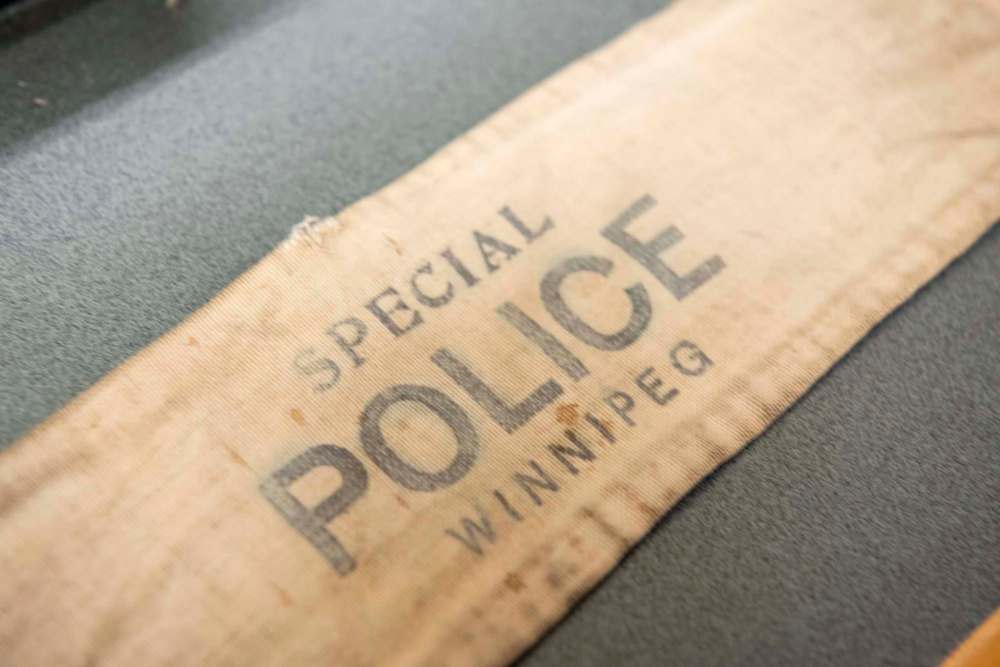
Originally fastened around a jacket sleeve with a set of snaps or modified with hand stitched elastic, these armbands bear witness to the involvement of special police constables in the 1919 Winnipeg General Strike.
Where to see it
Writer Brenda Suderman stepped into the past at Winnipeg Police Museum to check out century-old arrest records, mug shots, buffalo coats and other artifacts from nearly a century and a half of policing in Winnipeg.
Located on the ground floor of police headquarters at 245 Smith St., the museum is open 10 a.m. to 3 p.m. Tuesday to Friday. Admission is free, but donations are welcome. For more information, call 204-945-3976 or visit https://winnipegpolicemuseum.ca/
“They knew they were going to have all these civilians, so they needed ways to identify them,” museum curator Tammy Skrabek said, pointing to the large plastic bin of armbands stored on a shelf in a large second-floor archives room.
Along with the white armbands, printed with the words Special Police Winnipeg, the museum owns a bin of pinback celluloid buttons also issued to the anti-strike, anti-union volunteers hastily commissioned as police officers during the strike, which saw more than 30,000 workers participate, including most of Winnipeg’s Police Department.
Another large plastic bin holds dozens of night sticks, improvised from wagon wheel spokes and furniture legs during the strike.
Examples of each of these strike-related artifacts are on permanent display in the museum’s ground floor exhibit room in what once was public space in the former Canada Post building.
The non-profit museum moved downtown in 2016, after sharing space with the Winnipeg Police Academy in west Winnipeg for three decades.
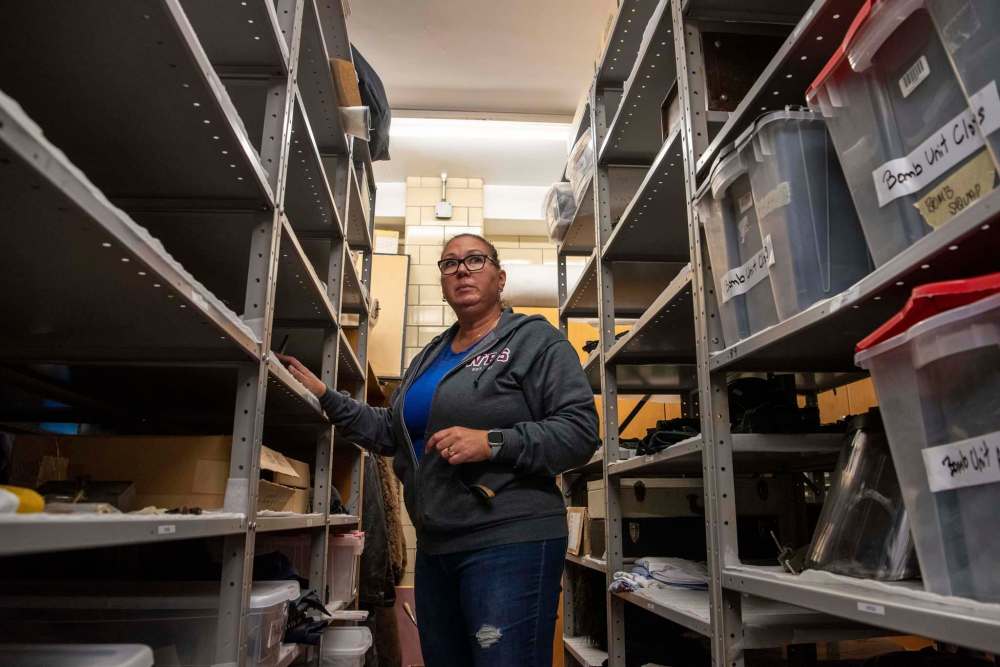
Members of a police historical committee began collecting materials in 1973, after police departments in the metropolitan area of Winnipeg merged into what is now known as the Winnipeg Police Service. That creation of one department after a century of independent municipal departments didn’t go over well with everyone, says Skrabek, resulting in the destruction of some materials before they could be handed over to a central storehouse.
“For Winnipeg, we have record books going back to 1870. I have nothing for Transcona or Kildonan,” she says of the municipal departments that merged with the Winnipeg department.
“We’re in the process of working on the pre-amalgamation stories prior to 1974.”
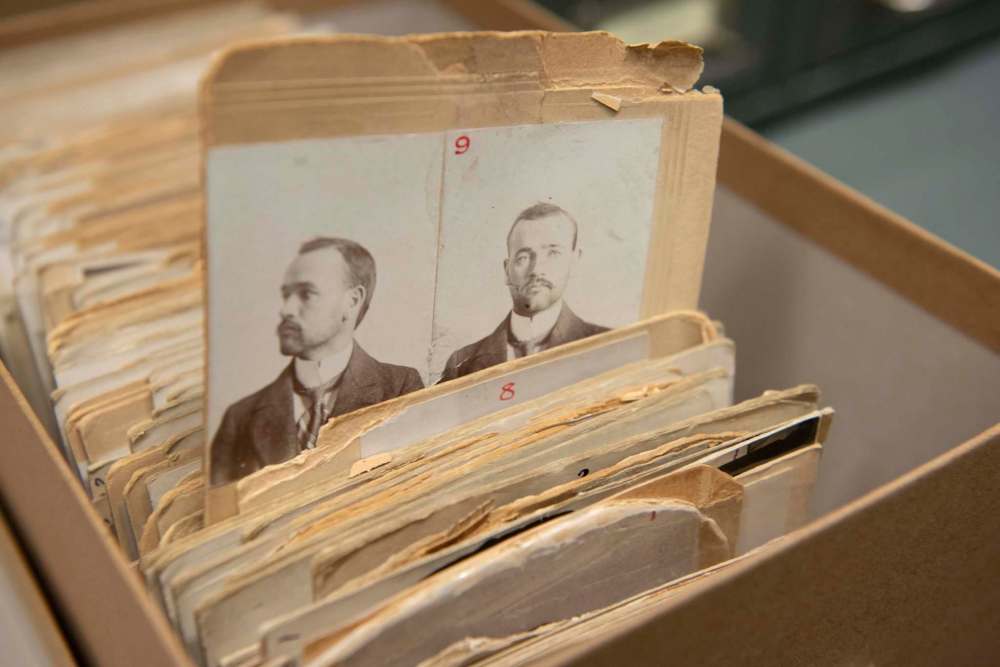
The second-floor climate-controlled archive and artifact storage room houses shelves and shelves of arrest records, robbery reports and mug shots, including a dozen or so hand drawn images from the 1870s, mostly from the Winnipeg department. Skrabek plans to digitize these carefully handwritten ledgers and files to create a searchable database for future researchers.
“It’s invaluable to preserve this,” she says of the floor-to-ceiling shelves filled with record books dated by year.
“It’s on paper, and paper and ink won’t last forever.”
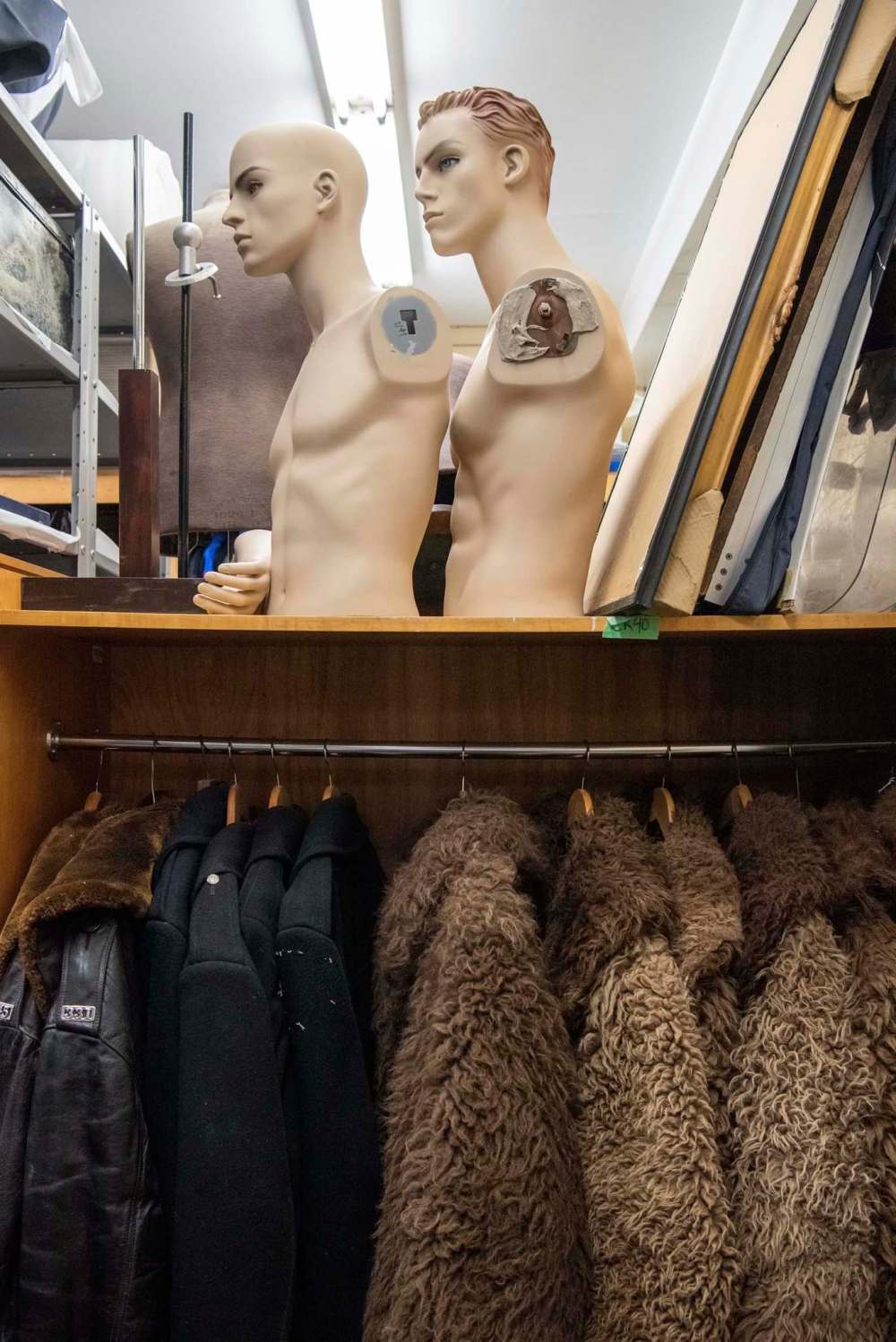
Although all museums preserve artifacts and digitize records, Skrabek deals with unique challenges compared to other community museums. The former police officer maintains and cares for 50 firearms—all disabled—and files an annual firearms report. She also curates a huge closet of clothing, including buffalo fur coats worn by beat officers for years, racks full of wool uniform jackets, and assorted uniform hats, gloves and boots, and maintains a fleet of 20 vehicles, including motorcycles, cruisers, a paddy wagon and a hovercraft that never saw active duty.
“Not every museum is faced with the same type of collection,” she says of the wide range of artifacts at the Smith Street location.
“We’re dealing with firearms and bullets and various police equipment. It all requires different types of preservation and not every museum is equipped to deal with that.”
The storage room also houses some one-off curiosities, like the photo radar camera damaged by an irate and likely irrational motorist after receiving a ticket for speeding.
“This guy got a ticket and drove back and shot at the box,” says Skrabek, adding the whole incident was caught on camera.
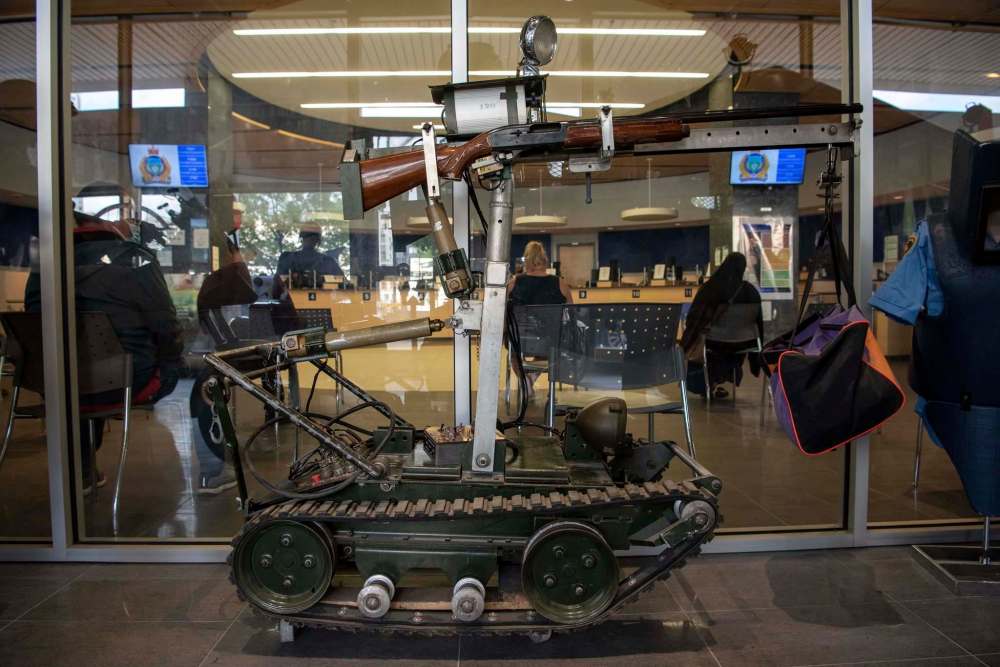
Like other community-run museums, Skrabek runs on a bare-bones budget, made up from donations, payroll deductions by current members of the Winnipeg Police Service and a grant from the City of Winnipeg to cover her part-time curator’s salary.
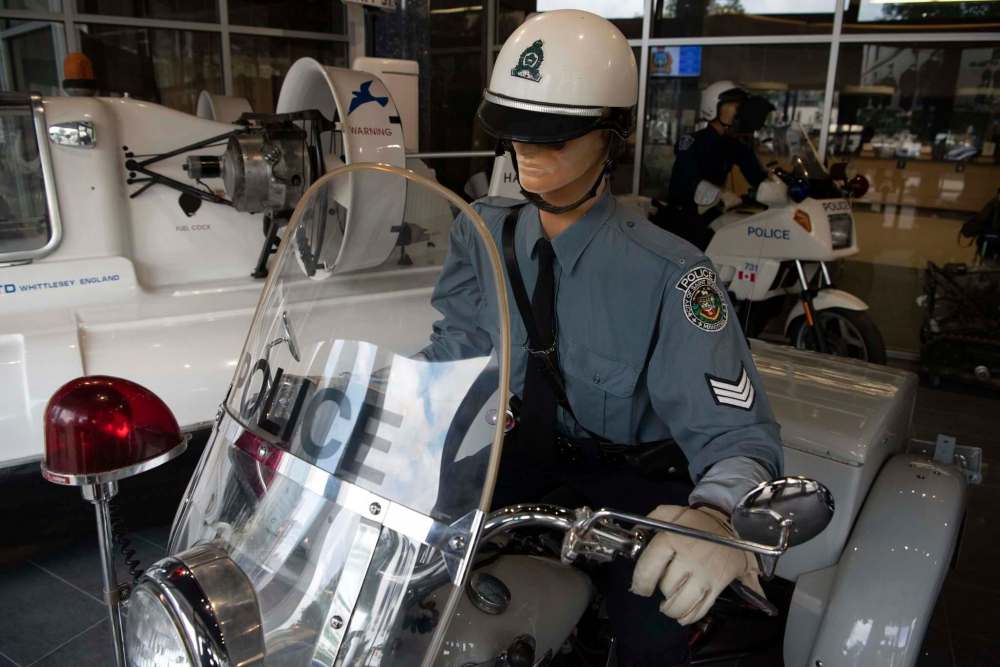
But she also counts on a wealth of volunteers who explain how an artifact was used to keep law and order on city streets. That 1978 Harley-Davidson motorcycle with attached sidecar may seem like a curiosity to some, but for former traffic officer Lawrence Klippenstein, it brings back memories of cold winter rides on snowy streets.
“Snow is bad but what was even worse was the sand on the street in spring,” he explains, adding that the sidecar didn’t carry passengers, but was employed to provide stability on slippery winter roads.
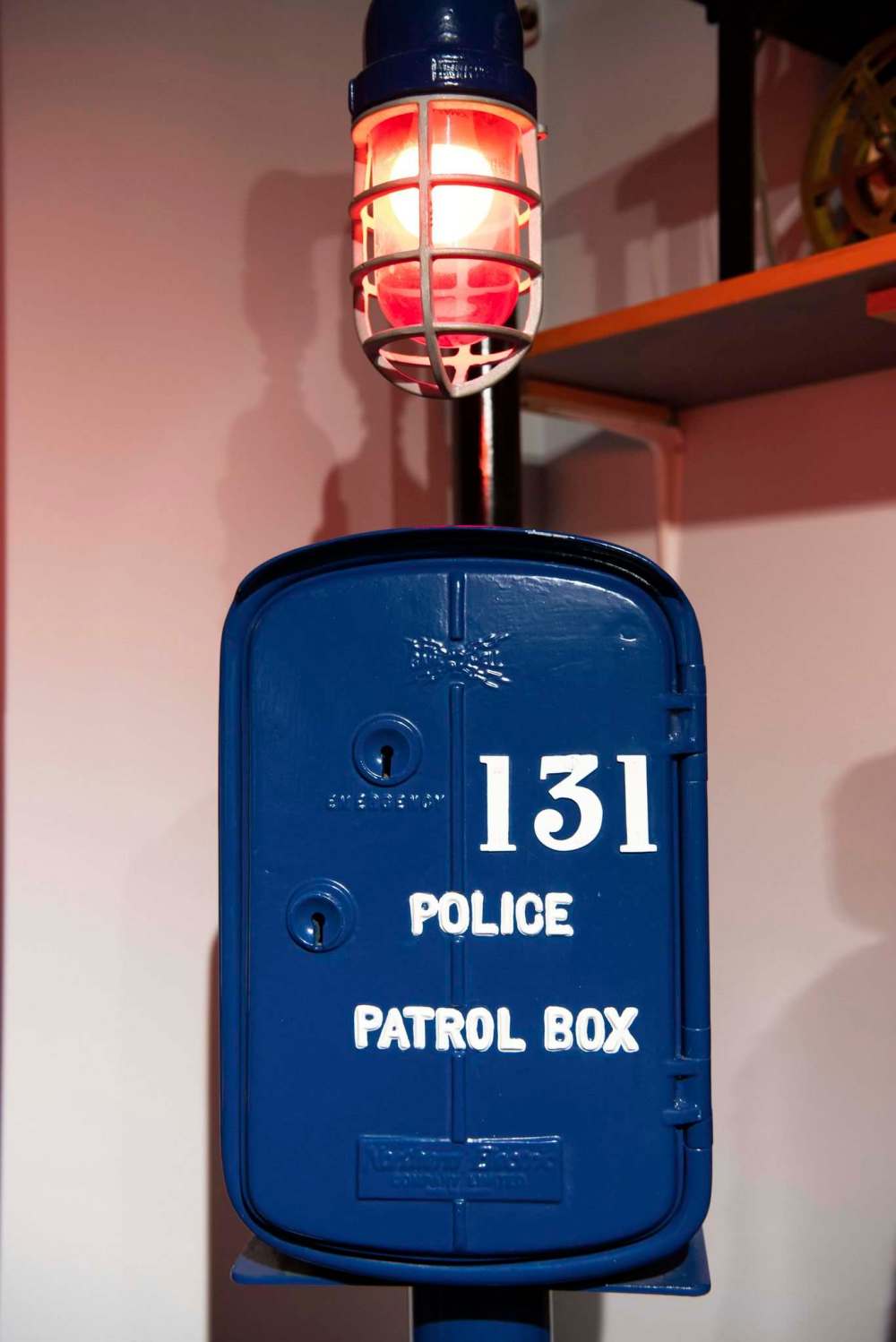
Smartphone-toting visitors may question the efficiency of a network of call boxes, used by beat officers to check in with their supervisors every 15 minutes or to call for a paddy wagon when making an arrest. But those cast-iron boxes, equipped with one-way telephones answered at local police stations, were cutting-edge technology in 1913 when installed, with Winnipeg only the third city in the world to employ the system, says former beat officer Don Wardrop, who joined the police in 1967 and retired as a district inspector in 1992.
“This is strictly a direct line and I often thought it would be good to (still) have them because it’s a direct line,” he says of the call boxes used until 1978.
Some technology preserved by the museum was less useful than anticipated, such as the 1971 hovercraft, given to the police department by an English manufacturer, but never mobilized for active duty on Winnipeg’s river system. Designed to fly over ice and water, the boat manufactured by HoverHawk was drydocked after a brief training period because it could only handle about 180 kilograms (400 lbs.)
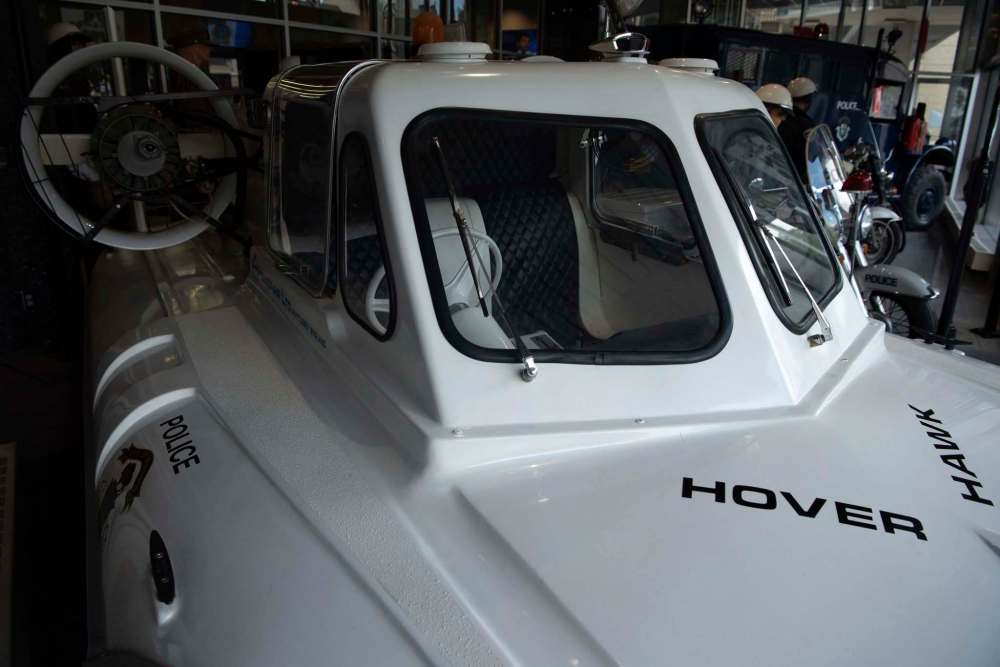
“It you take two officers fully clothed with their gun holsters, it was fully loaded and you couldn’t rescue anyone,” Skrabek says of the limitations of the hovercraft.
“They decided it wasn’t very conducive to policing in Winnipeg. The company didn’t want it back so it just went to a junkyard,” she says.
Eventually, it was donated to the museum where it is displayed both as a curiosity and perhaps a cautionary tale that not all technology functions in every context.
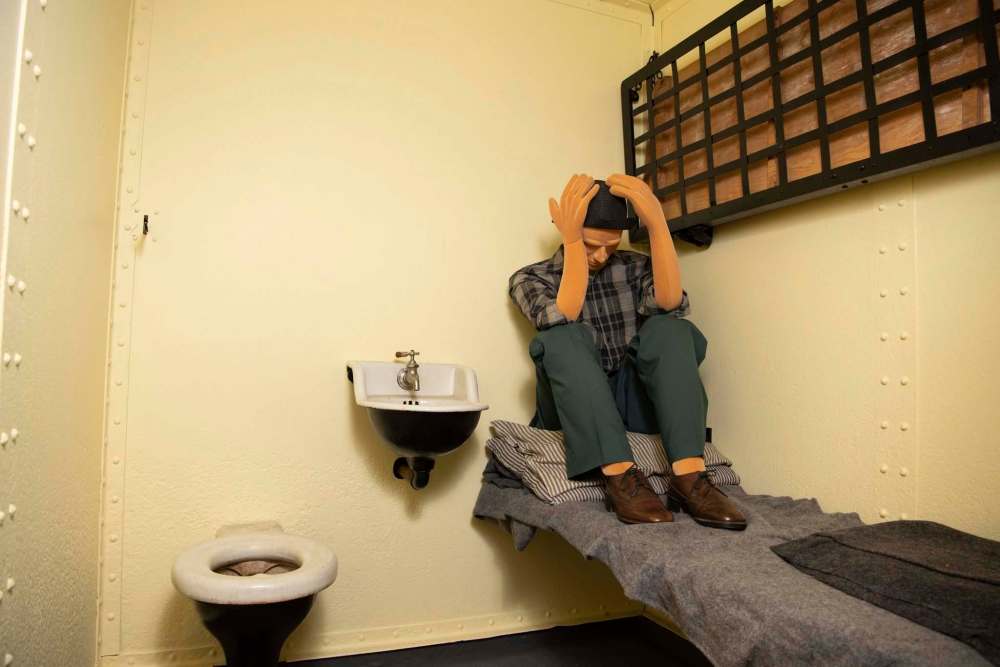
Visible to pedestrians passing by on the Graham Avenue sidewalk, the hovercraft and other vehicles in a front glassed-in room serve to entice visitors into the museum, says Skrabek.
“This was always designed to be a public area,” she says of the space accessible to museum visitors.
“And the museum was put here to make people feel more welcome.”
Currently behind locked doors, visitors can call the office number posted on sandwich boards on the sidewalks around the building, or buzz in at the security office.
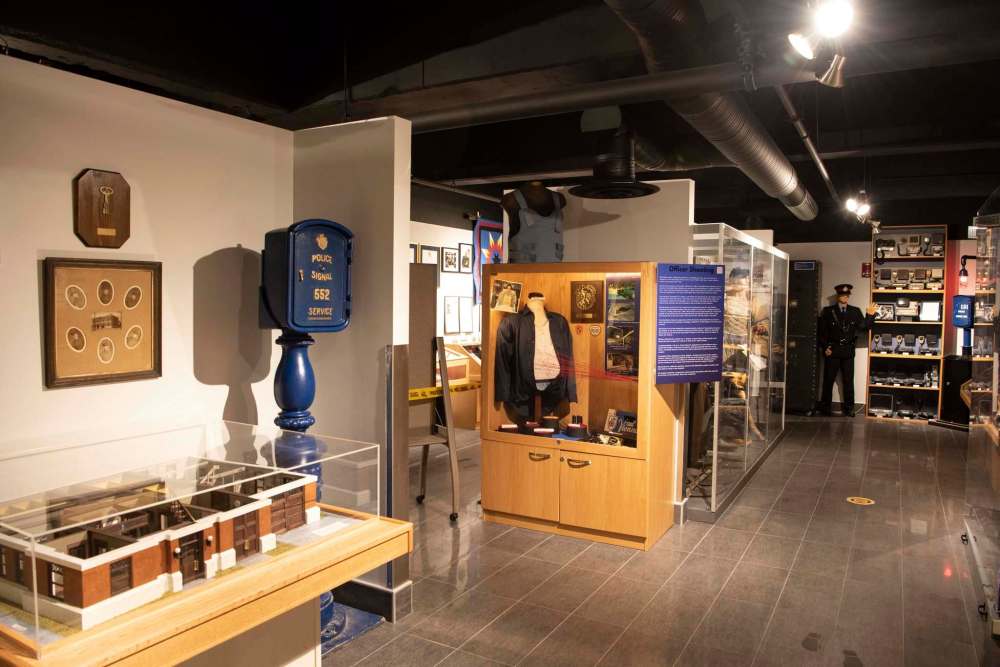
Once inside, volunteers will show visitors around the museum, share their own personal connections to the years of artifacts, and encourage visitors try on a uniform jacket or one of those heavy buffalo coats once worn by every cop pounding the beat.
“What I loved about buffalo coats is everyone would talk to you,” recalls Wardrop.

“Kids loved it, seniors would talk to you, and the drunks would come up to you and ask, ‘Got a light, Teddy Bear?’”
And now Wardrop and the other retired officers volunteering at the museum return that favour, sharing their stories and experiences with the 10,000 or so visitors who file through annually.
“I call them my walking exhibits,” says Skrabek of her 18 regular volunteers.
“That’s the thing we get the most comments from visitors—they love the tour guides.”
brenda.suderman@freepress.mb.ca

Brenda Suderman has been a columnist in the Saturday paper since 2000, first writing about family entertainment, and about faith and religion since 2006.
Our newsroom depends on a growing audience of readers to power our journalism. If you are not a paid reader, please consider becoming a subscriber.
Our newsroom depends on its audience of readers to power our journalism. Thank you for your support.






